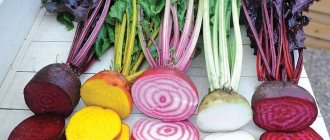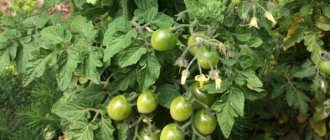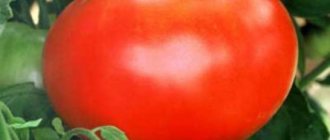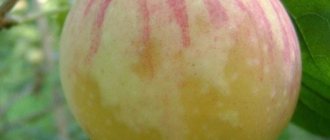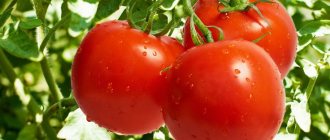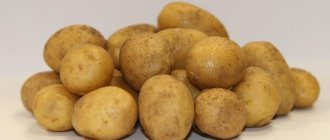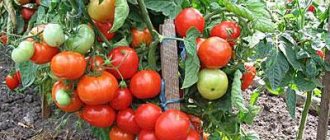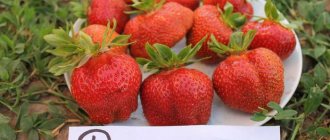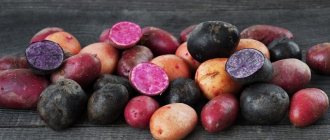Beetroot is a vegetable that has enormous nutritional value for the human body. You can prepare many dishes from it, the most famous of which are beetroot soup and vinaigrette. Almost every summer resident grows vegetables. Many vegetable growers are trying to grow modern varieties. Vodan F1 beets have gained particular popularity. If you grow and care for it according to all the rules, you will be able to reap a generous harvest. In a word, even a novice gardener can cope with it. Let's look at all the intricacies of this simple matter.
Sorry, there are no surveys available at this time.
Description of beet Vodan f1
The variety is considered early ripening. Ripening occurs 85-90 days from the moment the sprouts appear. This variety is characterized by a powerful rosette with intensely colored tops. The dark burgundy tubers are round in shape and have a smooth skin. The pulp is devoid of rings and quite dense. The main advantages of the Vodan f1 variety include:
- ease of care;
- sweet taste of pulp;
- possibility of long-term storage even with early sowing;
This variety of beets does not go to the arrow. The weight of one root crop is about 300-500 g.
Detailed characteristics and description of the variety
Beet "Vodan" F1 is a hybrid early-ripening multi-sprout table variety of the amaranth culture with a growth period of three months. Ground part of the plant: the rosette is strong, clearly developed, the tops are low, the leaves are directed straight up, rich burgundy-malachite color.
The root crop is round, with smooth edges and thin, smooth skin. The pulp of the root vegetable is rich burgundy, gives a lot of juice, with a characteristic sweetish taste and weak beetroot aroma, has no rings or core, and is dense. The pulp has an increased content of water and microelements. The average weight of a root crop ranges from 200 to 500 grams; within the same crop, approximately the same fruits grow.
The yield of beets without watering is 20-25 tons per hectare , with regular watering and fertilization it reaches 50 tons per hectare.
We invite you to watch a useful video about the characteristics of beets of the Vodan variety:
Tuber color
Table beet varieties do not always have a burgundy color. Its skin is dark pink, dark brown with shades of purple. If the color of the pulp is intense, this is a sign that the root vegetable is rich in useful microelements. This vegetable has a sweet taste and pleasant aroma.
Breeders have also developed exotic varieties that are characterized by the flesh of white and golden flowers. These include:
- Albina;
- Snow White;
Varieties Vodan F1, Detroit, Marmeladka are devoid of core and rings. Each of them lacks a core and characteristic rings. These varieties are suitable for preparing various salads.
Important! During formation and active growth, beets need abundant watering and sufficient lighting. The taste of the vegetable depends on these factors. If you provide it with such conditions, it will turn out sweeter and juicier.
Advantages and disadvantages
Wodan f1 has a number of positive qualities:
- unpretentious in cultivation and care;
- can be stored for a long time without losing taste and commercial qualities;
- root vegetables have a rich taste and aroma;
- resistant to cold and drought;
- has a high percentage of germination;
- invulnerable to major pests and diseases.
The disadvantages include the following:
- multi-sprouting (due to which the plant is periodically thinned out);
- the need for constant light and a certain soil composition;
- the need to follow the rules of crop rotation (bad predecessors - carrots, cabbage, rapeseed, spinach; good ones - potatoes, tomatoes, peppers).
Features of seeds
Most beet varieties require soaking the seeds. The Vodan f1 variety does not need such a preparatory procedure, since they have already been treated with a fungicide. This will prevent the development of diseases. Already at the time of sowing, the planting material will be protected from nematodes and other pests. The seeds of this variety are multi-sprouting. This feature suggests that two sprouts can hatch from one grain. This does not affect the yield and other parameters, but summer residents should know that weak sprouts need to be removed. If this is not done, the plantings will be thickened and the tubers will not be pleased with their large size.
Reviews from gardeners
Reviews from practicing gardeners about Vodan beets are mostly positive. It is noted that with low labor and material costs it was possible to obtain good yields. Minor deficiencies were compensated for by subsequently collected root crops of excellent quality. Here are some real reviews from our summer residents.
Maria Afanasyevna, pensioner: “I’ve been gardening for a long time. Every year I grow my own beets at the dacha; we don’t buy them for the winter. A couple of years ago I bought seeds of the Vodan f1 variety and was very pleased. The plants turned out to be resistant to diseases; no additional treatments were necessary. The fruits grew medium in size, but tasty, without rings or veins, and have a beautiful beet color. I will definitely grow this variety again.”
Igor Viktorovich, a novice summer resident: “My family and I recently bought a summer cottage and decided to grow organic vegetables and fruits there. In the store, the seller advised me to try the Vodan f1 beet variety. We trusted her opinion and agreed. I admit, I didn’t have to regret it. The harvest was good, with high taste and commercial qualities. Only the neighbor said later that additional weak shoots that formed some seeds should have been removed. Because of this, the heads grew small. But for the first experiment, the result is excellent, we will definitely grow this variety next season.”
Irina Gennadievna, village resident: “In the village, everyone tries to provide themselves with vegetables from their own garden. We grew beets constantly. A few years ago, the seller recommended that we try the new variety Vodan f1. I am suspicious of hybrids, but I dared to experiment. Now I admit that it’s not in vain. She reaped an excellent harvest of delicious root vegetables, and the family was satisfied. While I don’t plan to change this variety, I will definitely give it a place of honor on my plot.”
How to prepare a bed
Experienced vegetable growers recommend planting beets in a bed that was previously occupied by different varieties of cabbage, onions, parsnips, dill, and legumes. Corn, turnips, cucumbers, and potatoes are not welcome as predecessors.
The place for beets should be well lit. As for the soil, loam or sandy loam is ideal. If the soil has a high level of acidity, you can bring it back to normal by adding lime or wood ash. You can prepare the beds in the fall or right before sowing. The earth needs to be dug up halfway and leveled with a rake. All large clods of earth should be crushed.
Landing
Sowing Vodan f1 seeds can be carried out when the air temperature is around +12-15 degrees. It is important that the soil has time to warm up. Holes are dug in the area (depth 2-3 cm). A distance of 50 cm is maintained between the rows. This will allow plant crops not to experience a lack of sun.
A seed is placed in each furrow, then they are watered and sprinkled with soil. The beds are also watered. To prevent rapid evaporation of moisture, the plantings are covered with film or non-woven material for the garden (agrospan).
Watering the beds is carried out as the soil dries out. They do this until the shoots are visible.
Fact . After the beet harvest next year, this bed can be occupied by tomatoes, eggplants, garlic, and potatoes.
Sorry, there are no surveys available at this time.
Care
It is important to provide appropriate care for beet plantings. They need watering (at least once a week), shallow loosening of the rows, and timely removal of weeds. If you ignore weeding the beds, the beets will lack moisture and nutrients. Weeds, in turn, will attract pests, which can destroy the plant crop. It is recommended to cover the beds on which beets are planted with mulch (mown grass, last year's hay). It is best to interlayer (a layer of hay - a layer of grass). This way it will be possible to prevent the appearance of weeds and retain moisture in the ground. During the process of rotting of the layer that is laid below, substances necessary for the full development of the culture will begin to form.
Advice! As a rule, salt is not used as a fertilizer for garden crops. But a vegetable like beets needs this fertilizer. To prepare the solution, you need to fill a bucket with water, dissolve a glass of rock salt in it and mix thoroughly. Water the beds with the resulting mixture (once every 14 days). This remedy increases the amount of sugars in beets, due to which they acquire a sweet taste.
Sorry, there are no surveys available at this time.
Step-by-step instructions for growing
- Where and for how much can I buy seed material? Seed material can be purchased directly from gardening stores in Moscow and St. Petersburg, and can also be ordered via the Internet. The average cost of seeds excluding delivery is 25.5 rubles and ranges from 20 to 31 rubles per 2 grams.
- Boarding time. End of April – beginning of May.
- Choosing a landing site. The plant is a light-loving plant; a sunny, open place for planting is recommended. The optimal predecessors of this variety are cabbage, bulbous, legumes, and umbelliferous. You cannot plant beets after corn, cucumbers, tomatoes, and potatoes.
- What should the soil be like? The soil for sowing should be loose and non-clayey. Loamy and sandy loam types are acceptable. The soil should not be acidic; if it is acidic, then before planting, add wood ash and dolomite flour. Before sowing, it is necessary to treat the soil:
- Before autumn, plant remains are crushed, and the area is peeled with disc hulls for the germination of weeds.
- After 3 weeks, the sprouted weeds are plowed and destroyed.
- The soil is loosened to 30 centimeters.
- In spring, harrowing and soil cultivation are recommended.
- Landing.
It is recommended to prepare beds for beets in the fall or immediately before planting. The soil is dug up using half a shovel and leveled with a rake, getting rid of clods, stones, and weeds. Sowing is done in soil furrows to a depth of 2.0-3.0 centimeters according to a 6x30 cm pattern. Important! The first days after sowing, the soil should be well moistened; after the formation of root crops, watering should be rare. Germination a week after sowing. - Temperature. Sowing is possible in the temperature range of 11-16 degrees. The most optimal temperature for planting is 13 degrees.
- Watering. Watering is carried out once a week, immediately after watering the soil is loosened and weeds are removed. Weeds harvested at the wrong time attract a lot of pests to the site, and also cause a deficiency of water and microelements in the soil, impairing crop growth.
- Fertilizing. To improve crop growth, fertilizing is recommended.
Fertilizer application rate:- 200 kg N/ha (in parts);
75 kg P205/ha;
- 250 kg K20/ha;
- 100 kg kieserite/ha.
- Other measures for caring for vegetables. It is not recommended to soak the seeds of this variety, since they are treated against fungal infections with a specific fungicide that protects them from nematodes and other pests. The multi-sprout nature of the crop makes it necessary to remove weaker sprouts in order for the root crops to be large. Mulching the beds with last year's hay or mown grass brings a positive result - this effectively prevents the evaporation of moisture and the growth of most weeds. When the lower layer rots, additional nutrients enter the soil.
- Harvesting technique. Harvesting is carried out as the root crops grow, no earlier than three months after planting. A month before the expected harvest, watering is stopped. For cleaning, choose a dry, clear day. The heads are removed from the soil using a fork or by pulling them by the tops.
- Harvest storage. After digging, the beets are left in the sun to dry, after which the heads are cleared of soil residues, the foliage is trimmed and stored in a cool and dark room (basements with low humidity).
How to grow beets using seedlings
Some vegetable growers resort to the seedling method of growing beets. In this case, their goal is to obtain an early harvest. Small containers (minimum 10 cm in diameter) are suitable for seedlings. They are then filled with all-purpose vegetable soil. Boiling water is used for irrigation. As soon as the soil has cooled, dig small holes (2-3 cm deep) and place seed in them. Usually, at room temperature, the emergence of seedlings can be observed within 7-10 days. The exact timing depends on what type of seed was chosen.
One sprout is left in each container, the excess ones are removed. Watering the seedlings should be done when the top layer of soil dries out. The place where it is located should be well lit.
You need to transfer the seedlings to the garden bed when the period of night frosts has passed. It is recommended to do this in the evening. In the prepared area, furrows are made and the seedlings are placed in them directly with a clod of earth, then they are watered abundantly and covered with earth. To acclimatize the seedlings, they are covered with agrospan. Such a shelter will protect fragile sprouts from sunlight, cold winds, and will help maintain moisture.
